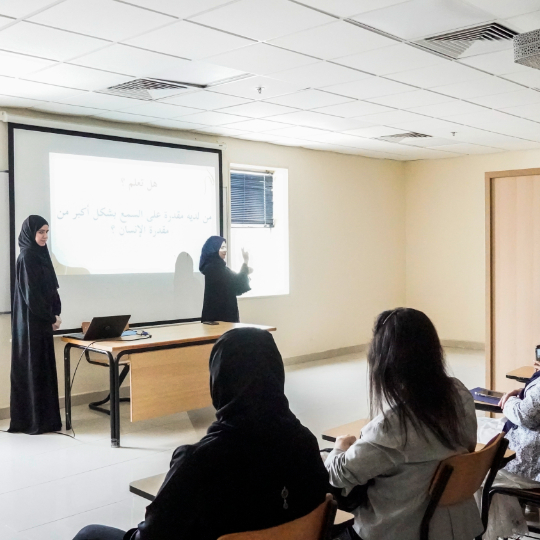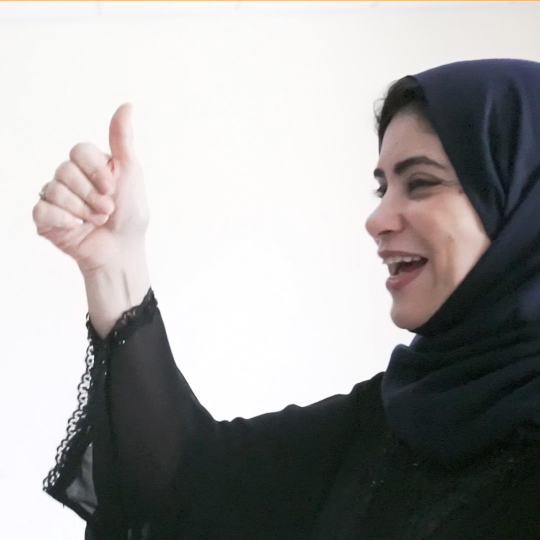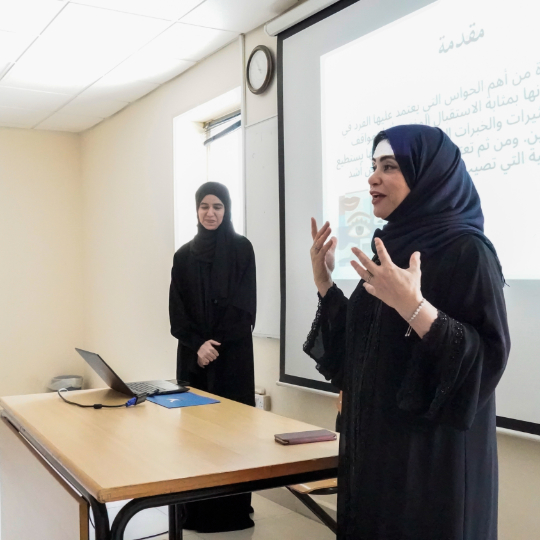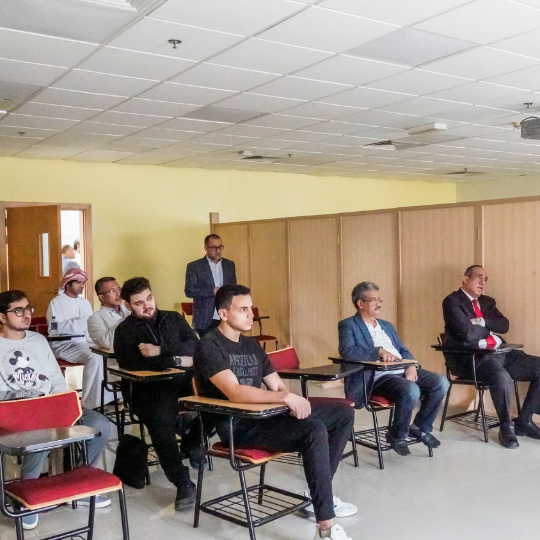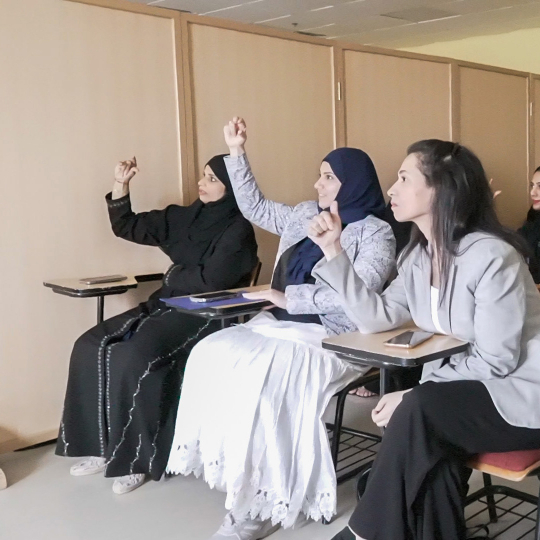Workshop on "Basics of Sign Language"
Thursday, Oct 19, 2023
Workshop on "Basics of Sign Language"
Location: Room 103J Mode: In-person Duration: 3 hours Time: 1:30 PM Date: October 19, 2023 Day: Thursday
The Student Affairs Deanship and the Counseling and Happiness Center organized a workshop titled "Basics of Sign Language" presented by Ms. Khatam Abu Sultan, a certified sign language interpreter accredited by the Ministry of Community Development, working at the Sharjah City for Humanitarian Services in Khorfakkan. The workshop took place at 1:30 PM on Thursday, October 19, 2023, in room 103J.
Ms. Khatam explained that sign language is a visual language that uses hand movements, facial expressions, and body language to convey meaning. It is a vital means of communication for the deaf and hard of hearing community. Attendees of this workshop learned the fundamentals of sign language, its importance in society, the differences between sign language and spoken language, and practical training on the alphabet and essential signs for interacting with individuals with hearing impairments.
Sign language is a unique and important language used by millions of people worldwide. It differs from spoken language in that it relies on visual signals rather than auditory ones. Sign language is not universal; there are many different sign languages used around the world. For example, American Sign Language (ASL) is used in North America, while British Sign Language (BSL) is used in the United Kingdom, and Emirati Sign Language is a vital part of the deaf culture. Effective communication with the deaf and hard of hearing community requires learning the basic vocabulary and rules of sign language. This includes learning the alphabet, numbers, common phrases, expressions, sentence structure, and grammatical rules. Learning sign language may require effort, but it is a rewarding experience that can help bridge the communication gap between the deaf and hard of hearing community and the hearing community. By learning sign language, we can ensure equal communication opportunities for everyone.
The practical application of sign language is vast and diverse. It can be used to communicate with the deaf and hard of hearing community in daily life, such as in social situations, work settings, or educational environments. Learning sign language can also open up new employment and educational opportunities.
In conclusion, sign language is a vital means of communication for the deaf and hard of hearing community. Learning sign language can help bridge the communication gap between hearing and non-hearing communities, and it can open up new opportunities for employment and education. By attending this workshop and learning the basics of sign language, we can all play a role in creating a more inclusive and accessible community.
